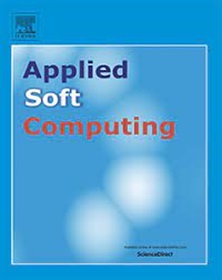Hyperbolic spatial-temporal network for session-based recommendation
IF 6.6
1区 计算机科学
Q1 COMPUTER SCIENCE, ARTIFICIAL INTELLIGENCE
引用次数: 0
Abstract
The goal of Session-based recommendation is to recommend the next item a user may be interested in based on historical click data, without relying on user profiles. Compared to the data from other recommendation scenarios, session data is typically more sparse, thus Self-supervised learning (SSL), which derives ground-truth from raw data, has gradually gained attention. Existing SSL methods usually augment data by dropping or transforming original sequences in Euclidean space, leading to two problems. Firstly, in Euclidean space, it is difficult to handle the distorted distribution and hierarchical nature of session data, and secondly, the essential spatial and temporal features of session data are usually overlooked. To address these issues, we propose the Hyperbolic Spatial-Temporal Network (HSTN), which enhances the performance by generating positive samples with the spatial-temporal features of session data in hyperbolic space. Specifically, we first use a hyperbolic hypergraph neural network as the base encoder to mitigate the influence of distorted data distribution. Then, we employ a spatial-temporal feature learning module to generate positive samples with spatial-temporal features for contrastive learning. Extensive experiments on three real-world datasets demonstrate that our proposed method achieves improvements of 11.6 %, 17.6 %, and 38.4 %, respectively, compared to current state-of-the-art methods, under P@10 metric.
基于会话推荐的双曲时空网络
基于会话的推荐的目标是根据历史点击数据推荐用户可能感兴趣的下一个项目,而不依赖于用户配置文件。与其他推荐场景的数据相比,会话数据通常更加稀疏,因此从原始数据中获取基础事实的自监督学习(Self-supervised learning, SSL)逐渐受到关注。现有的SSL方法通常通过删除或转换欧几里得空间中的原始序列来增加数据,这会导致两个问题。首先,在欧氏空间中难以处理会话数据的扭曲分布和层次性,其次,会话数据的基本时空特征往往被忽略。为了解决这些问题,我们提出了双曲时空网络(Hyperbolic Spatial-Temporal Network, HSTN),它通过在双曲空间中生成具有会话数据时空特征的正样本来提高性能。具体而言,我们首先使用双曲超图神经网络作为基本编码器,以减轻数据分布失真的影响。然后,我们使用时空特征学习模块生成具有时空特征的正样本进行对比学习。在三个真实数据集上进行的大量实验表明,在P@10度量下,与当前最先进的方法相比,我们提出的方法分别实现了11.6%,17.6%和38.4%的改进。
本文章由计算机程序翻译,如有差异,请以英文原文为准。
求助全文
约1分钟内获得全文
求助全文
来源期刊

Applied Soft Computing
工程技术-计算机:跨学科应用
CiteScore
15.80
自引率
6.90%
发文量
874
审稿时长
10.9 months
期刊介绍:
Applied Soft Computing is an international journal promoting an integrated view of soft computing to solve real life problems.The focus is to publish the highest quality research in application and convergence of the areas of Fuzzy Logic, Neural Networks, Evolutionary Computing, Rough Sets and other similar techniques to address real world complexities.
Applied Soft Computing is a rolling publication: articles are published as soon as the editor-in-chief has accepted them. Therefore, the web site will continuously be updated with new articles and the publication time will be short.
 求助内容:
求助内容: 应助结果提醒方式:
应助结果提醒方式:


